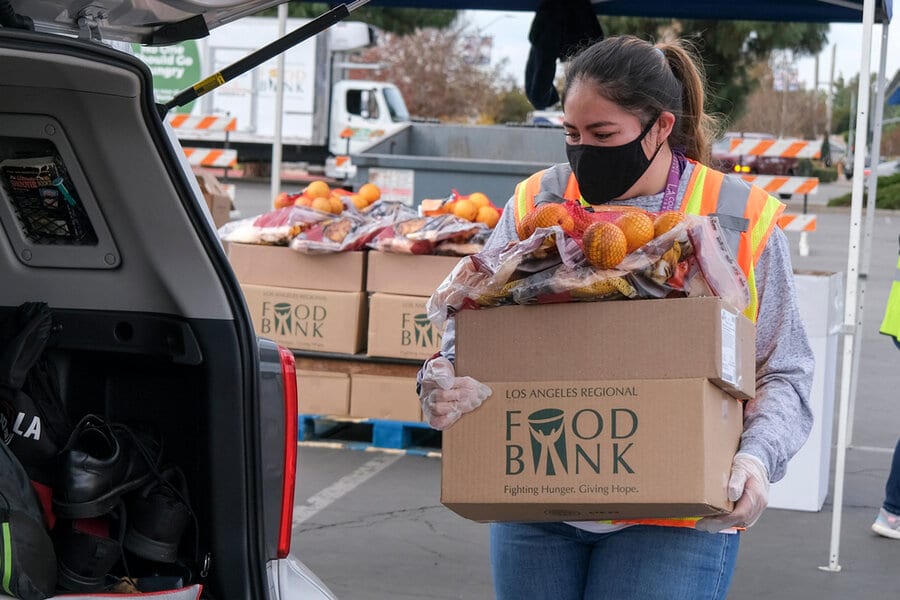

Impact Investments, Impact Investing Advisory Services
Key Takeaway
Community foundations and DAF sponsors should move away from the longstanding dichotomy of “grant only” and “market-rate only” options available to donors. Whether it’s SVCF using a 0% recoverable grant structure or the Federation using a low-cost, impact-first loan in our pilots, we are now building a foundation for the right legal and accounting structure to enable these investments.
This article originally appeared on Inside Philanthropy.
The fallout from COVID-19 has been unprecedented and widespread, but the consequences have been unequal. In December, Black and Latinx households were at least twice as likely as white households to report food insufficiency, inability to pay rent, and difficulty paying their usual expenses. The employment gap by race is stark, with unemployment at 9.9% for Black workers and 6% for white workers. As we confront overlapping health, economic and racial crises, we need to use all sources of capital, especially the vast resources available in donor-advised funds (DAFs) to rebuild a more just and equitable society. DAF sponsors and donors should leverage tools and resources beyond traditional grantmaking, such as impact-first investments, to quickly deploy low-cost, flexible capital to accelerate an equitable recovery.
The DAF market represents a significant pool of assets—currently more than $140 billion dollars—that largely remain in traditional market-rate investments that lack an intention or mandate to generate positive social outcomes. And the appetite for impact-first investments among DAF donors is strong.
Forthcoming research from Social Finance conducted with the support of the Rockefeller Foundation presents the largest-known nationwide survey of DAF donors on impact investing to date. Our research found that the DAF marketplace often established a false dichotomy between grantmaking (where donors seek impact with no expectation of a return) and market-rate investments (where investors seek financial return with no expectation of impact). Very few DAF sponsors offer donors a range of options along the entire capital spectrum between traditional grants and traditional investments. Impact-first investments, for example, are primarily motivated by the desire to contribute to social and/or environmental outcomes as their primary purpose, and achieving at least some recovery of principal—and potentially positive returns—is their secondary purpose. DAF sponsors also lack the capacity to help donors direct investments into place-based strategies that recognize the unique needs of each region.
However, the survey also found that more than 70% of DAF holders have a strong interest in making impact-first investments through their funds. DAF holders also express a willingness to allocate up to 20% of their DAF balance to impact-first investments to augment traditional grantmaking.
Community foundations, DAF sponsors, and third-party service providers have begun to meet this demand for impact investments with new solutions. Some community foundations such as the Chicago Community Trust, Oregon Community Foundation, Baltimore Community Foundation, and San Francisco Foundation have prioritized place-based approaches by offering donors local impact investment options. The Seattle Foundation partnered with an intermediary, Realize Impact, to enable donors to make recoverable grants to global organizations tackling a variety of social challenges. ImpactAssets has established a DAF platform for donors to select from a variety of impact investments, and CapShift has created a turnkey impact investing platform for DAF sponsors.
In 2020, Silicon Valley Community Foundation (SVCF) and Jewish Community Federation and Endowment Fund (the Federation) used their role as place-based DAF sponsors to begin to fill the gap between community need for an equitable recovery and donor demand for more impact-first opportunities. In partnership with Social Finance, both organizations launched pilot programs to engage donors, build capacity, and put capital to work in rebuilding a more equitable Bay Area. Here, we share some early lessons from our work to encourage other philanthropic organizations and their donors to deploy DAF assets to increase the flow of capital where it is most needed.
1. Place matters
The needs of each community and region are unique, and there is not a one-size-fits-all solution. Community foundations and place-based philanthropic organizations often have a unique knowledge and a history of grantmaking to understand the needs of their own communities. By leveraging that institutional knowledge of place, community foundations can begin to design opportunities that maximize impact. The pilot programs at SVCF and the Federation focus on some of the largest challenges facing Silicon Valley and the Bay Area, including affordable housing, income inequality, the fragility of nonprofit organizations in the wake of COVID, and the effects of climate change on the region, including wildfires. The pilot offers themed portfolios to pool donor capital and allows each donor to direct capital to the issues that align with their philanthropic goals.
2. Find the right partners
The Bay Area is lucky to have many high-quality community development financial institutions (CDFIs) that have a strong history of both financial stability and community impact. These CDFI partners are a natural fit as intermediaries with knowledge and experience lending to communities that often face the highest levels of inequity and lack access to capital. However, each region should evaluate its own financial and social infrastructure to determine the capacity to deploy capital, who the right partners are, and what work needs to be done to build the infrastructure to move capital with impact.
3. Ask what capital is needed
Traditional grantmaking has an important role to play in helping maintain and rebuild our communities, but more types of capital are needed to fully fund recovery efforts. For example, expanding access to early childhood education by adding more facilities in underserved communities or adding renewable energy capacity to low-income households are projects that can be too large to be fully funded by grant capital, and they do not attract traditional investment capital because of the absence of financial returns.
Community foundations and DAF sponsors should move away from the longstanding dichotomy of “grant only” and “market-rate only” options available to donors. Whether it’s SVCF using a 0% recoverable grant structure or the Federation using a low-cost, impact-first loan in our pilots, we are now building a foundation for the right legal and accounting structure to enable these investments. In discussing the need for capital, Bulbul Gupta, president and CEO of Pacific Community Ventures, said:
“Silicon Valley Community Foundation and the Jewish Community Federation and Endowment Fund have provided us with the patient, low-cost capital that we most need through this crisis to provide truly affordable loans to the most underserved small business owners in the Bay Area and shape a more inclusive recovery ahead with good job creation. We hope that the pilots will encourage more DAF sponsors and donors to mobilize DAF capital to organizations like ours.”
4. Proactively engage your donors with impact opportunities
Historically, DAF sponsors have shied away from asking or leading their donors in philanthropy. Too often, the DAF sponsor has simply become an invisible intermediary. In March 2020, SVCF President and CEO Nicole Taylor sent appeals to the community foundation’s donors urging them to give an additional 5-10% from their funds to support communities through the COVID-19 crisis, followed by additional appeals to support racial justice efforts and wildfire relief. By December 2020, SVCF’s donors had given $249 million to COVID-related causes. And in response to COVID-19, the Federation made personal appeals to donors to make recoverable grants to Hebrew Free Loan, a nonprofit experiencing an exponential demand for its zero-interest loans. The Federation raised $5 million in a matter of days to deploy 350+ loans to borrowers affected by COVID-19.
Community foundations have a unique role to play as a connection between donors and the community, and should help lead donors in their philanthropic journeys. In just three months since launching the impact-first investment pilots in December 2020, the Federation and SVCF have raised an additional $6.5 million for the impact-first pilot program. In reflecting on the progress of the pilot to date, Taylor said:
“Silicon Valley Community Foundation believes that we have the responsibility to help guide our donors in maximizing their philanthropic dollars not only through traditional grantmaking but also through place-based and impact-first investments. Our pilot with Social Finance has allowed us to expand the tools we can offer our donors to help them amplify their impact, achieve their philanthropic goals, and contribute to equitable recovery efforts.”
There has never been a more urgent need to reimagine the role that DAFs can play in supporting more equitable access to capital. As we work to build back better, DAF sponsors and donors must work together to ensure that more DAF capital flows to where it is needed most in this moment to enable entrepreneurs, families, and communities of color to overcome pervasive economic displacement.
Tracy Palandjian is CEO and Co-Founder of Social Finance. Danny Grossman is CEO of the Jewish Community Federation and Endowment Fund.
Related Insight

Unlocking Donor-Advised Funds for Impact through Pay for Success
Donor-advised funds (DAFs) have immense potential to make a positive impact on urgent and entrenched social issues by allowing donors to make a non-redeemable gift to a fund and take an immediate tax deduction.

Philanthropy Now Podcast: Multiplying Grantmaker Power with Impact Investing
On Silicon Valley Community Foundation's "Philanthropy Now" podcast, Jackie Khor, Vice President, Social Investments at Social Finance, discusses how impact investing, including donor-advised funds, can complement traditional philanthropic grantmaking to drive social good.